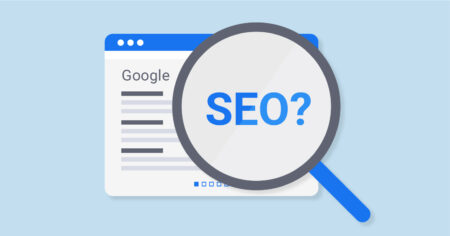In today’s digital landscape, developers often rely on APIs to build and enhance their applications. One such popular API is the Facebook Data API, which allows developers to access and manipulate Facebook data to create unique and engaging user experiences. However, with great power comes great responsibility, and developers must be cautious when using the Facebook Data API. This article will guide developers through best practices and pitfalls to avoid when using the Facebook Data API, ensuring data privacy and security, and optimizing API performance.
Table of Contents
Common Mistakes when Using the Facebook API
1. Ignoring Documentation and Versioning
One of the most common mistakes that developers make when using the Facebook Data API is not thoroughly reading the documentation. Facebook provides detailed documentation, which is essential in understanding how the API works and how to use it effectively. Failing to read the documentation can lead to common mistakes and wasted time, as developers may struggle to understand the API and its capabilities.
In addition to documentation, developers should also pay close attention to API versioning. Facebook frequently updates its APIs, and developers must ensure they are using the correct version to avoid potential issues. By using the latest version of the API, developers can take advantage of new features and improvements, while older versions may be deprecated and eventually removed.
2. Not Handling Errors and Rate Limits Properly
Another common mistake when using the Facebook Data API is failing to handle errors and rate limits properly. The API is designed to return various error codes, which can help developers identify problems and take the necessary steps to resolve them. Ignoring these error codes can lead to a poor user experience, as the application may not function as intended.
Rate limits are another critical aspect of the Facebook Data API that developers must consider. These limits are in place to prevent abuse of the API and ensure fair usage among all developers. Exceeding rate limits can lead to temporary or permanent suspension of API access. To avoid this, developers should implement proper error handling and rate limit management to ensure smooth operation of their applications.
3. Relying on Deprecated Features
As mentioned earlier, Facebook frequently updates its APIs, and this may include deprecating certain features or endpoints. Developers must stay informed about these changes and avoid relying on deprecated features, as they may eventually be removed and cause the application to break. By staying up to date with the latest API changes and adjusting their applications accordingly, developers can ensure a stable and future-proof application.
Ensuring Data Privacy and Security with the Facebook API
1. Requesting Only Necessary Permissions
When using the Facebook Data API, developers must be careful about the permissions they request from users. Requesting unnecessary permissions can lead to privacy concerns and may deter users from using the application. To maintain user trust, developers should request only the permissions necessary for the application to function and avoid requesting access to sensitive user data unless absolutely required.
2. Storing and Securing User Data
Another critical aspect of data privacy and security when using the Facebook Data API is proper storage and security of user data. Developers must ensure that any data collected from users is stored securely and in compliance with data privacy regulations, such as the General Data Protection Regulation (GDPR) and the California Consumer Privacy Act (CCPA).
This includes encrypting sensitive data, implementing strong access controls, and regularly auditing data security practices. Additionally, developers should have a clear data retention policy in place, ensuring that user data is not stored for longer than necessary and is securely deleted when no longer needed.
3. Being Transparent with Users
Transparency is key when it comes to data privacy and security. Developers should be clear with users about the data being collected, how it is being used, and any third parties with whom it is being shared. This information should be provided in a clear and concise privacy policy, which users should be required to agree to before using the application.
By being transparent with users and maintaining strong data privacy and security practices, developers can build trust and ensure a positive user experience when using the Facebook Data API.
Best Practices for Optimizing API Performance
1. Caching API Responses
One of the most effective ways to optimize the performance of the Facebook Data API is by caching API responses. Caching involves storing the results of an API call and reusing them for subsequent requests, reducing the number of calls made to the API and decreasing latency.
Developers can implement caching in various ways, including using in-memory caches, local storage, or caching proxy servers. The choice of caching method will depend on the specific needs and requirements of the application, but regardless of the method used, caching can greatly improve API performance and reduce the load on both the client and server.
2. Using Batch Requests and Webhooks
Another best practice for optimizing API performance is using batch requests and webhooks. Batch requests allow developers to combine multiple API calls into a single request, reducing the overhead of making individual requests and improving overall performance.
Webhooks, on the other hand, enable developers to receive real-time updates from Facebook when certain events occur, such as a new post being published or a user liking a page. By using webhooks, developers can avoid the need for constant polling of the API, reducing the load on both the client and server and improving performance.
3. Monitoring and Analyzing API Usage
Finally, it is essential for developers to monitor and analyze their API usage regularly. This can help identify potential bottlenecks and areas for optimization, ensuring the application runs smoothly and efficiently.
Monitoring can include logging API calls, tracking response times, and measuring the number of errors encountered. Analyzing this data can help developers identify trends and patterns, allowing them to make informed decisions about optimizing their API usage.
By following these best practices and avoiding common pitfalls, developers can harness the power of the Facebook Data API to create engaging and efficient applications while maintaining user trust and ensuring data privacy and security.




